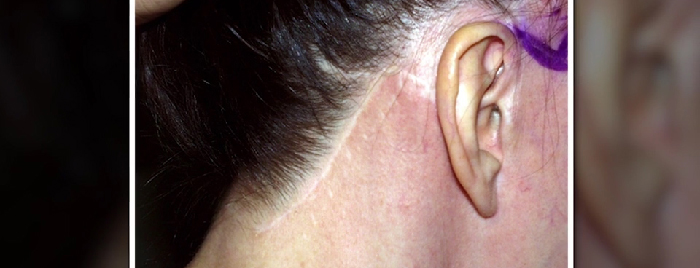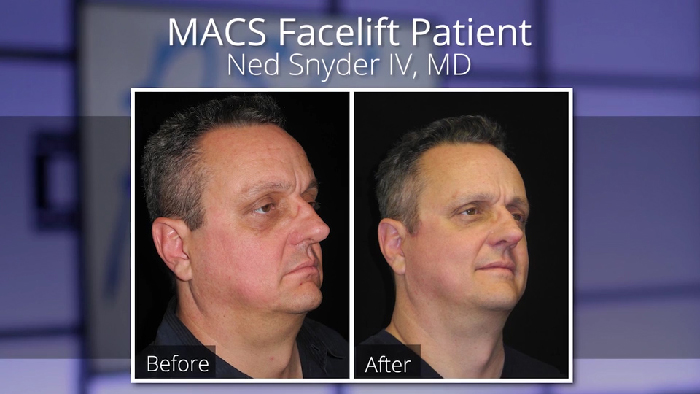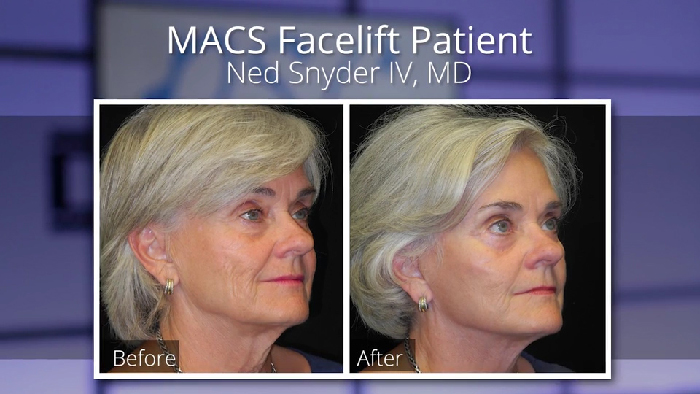The facelift procedure tends to get some grief due to the incision typically placed behind the ear that can be noticeable. While facelift results have become increasingly more natural with the advent of fat grafting, facial fillers, and high-tech skin care, ultimately for many patients, tissue removal and/or placement is still a requirement to erase the effects of time.
When it comes to this step, the MACS facelift – a procedure that utilizes a smaller scar than traditional facelifts – seems to be a great option for most. Dr. Ned Snyder, a board certified plastic surgeon practicing in Austin, describes the technique and what it can provide patients.
Traditional vs. an MACS Facelift
Much of the bad rap from facelift results tends to be the “windblown” look, or overstretching done by either an overzealous surgeon or simply the product of a patient having too little of volume in the face. This can be resolved today by both the decision to see an experienced and board certified plastic surgeon who aims to craft natural results, and also their intent to use filling products or your own fat to replace the extremely important facial volume.
That being said, the traditional scar placement of a facelift CAN be noticed sometimes in it’s behind-the-ear positioning. “That scar behind the ear is the stigmata of a facelift,” explains Snyder. “If we can avoid it altogether, I think that’s the ideal facelift.”
MACS stands for Minimal Access Cranial Suspension, the elegant way of denoting a facelift involving a shorter incision than usual. Not only is the incision smaller, but it is placed in an area less easily noticed. “It’s a facelift with a smaller incision,” explains Snyder. “What that means is an incision in front of the ear usually along the interior hairline.”
Having a shorter scar to hide is already a positive, and being able to utilize the hairline helps it to virtually disappear.
Recovery from an MACS Facelift
While the scar is shorter, it still is a surgical procedure to the face; it will take some time for recovery. “I tell patients they’re gonna look awkward the first week and you’re gonna feel puffy and dimpled,” explains Snyder. “After about two weeks, everybody is presentable to people who aren’t friends or family, who don’t necessarily know what you look like. In about three weeks, you won’t look post-surgical with friends and family.”
Recovery timetable:
- Week 1: Awkward-looking and puffy
- Week 2: Healed enough for persons unfamiliar with you to not notice any signs of surgery
- Week 3: Healed to the point where family and friends do not notice any signs of surgery
Accomplishing Much for just a Short Scar
With all of the additions and honed techniques when it comes to modern facelifts, patients really can significantly turn back the clock – all while maintaining a natural look that is them. “I think it’s pretty dramatic in terms of what you can improve with a MACS lift – from the neck to the lower face, the jowls, malar fullness – our cheekbones essentially,” says Snyder. “How we look and what we restore is pretty dynamic.”


















Facebook
Twitter
Instagram
YouTube
RSS